Humans invented computing machines to use them as tools. However, these tools have developed to such an extent that, what not long ago was thought to be unimaginable, for example, computational generated texts or machines creating new machines, is now common-place.
The exhibition Non-machines: Playground of Perspectives reflects this situation which is fast becoming a new normal. By “non-machines” we mean human and non-human actors or tools that are not yet integrated into a machine network, such as a creature evolving freely in nature, or a human not connected to digital networks.
The exhibition invites us to rethink the relations between machines and non-machines, using a change of perspective: from one which sees the relationship between machines and non-machines as competing powers, to a more equitable and non-competing relationship among all entities.
The exhibition explores how emerging technologies, particularly digital technologies, suggest new relationships between artists and their technological tools. How can and should machines and non-machines relate to each other? How can the use of new methods and tools help us experience the environment?
The framework of this exhibition is developed by the professorship of Media Environments (Prof. Ursula Damm) at the Bauhaus University Weimar.
Exhibition
-

Chasing, Escaping – The pull of dreams and ego
Quan Zhou (CN)
This project emphasizes the intense emotional interaction and experience between a human and a machine, prompting emotions to flow through the senses and leading to deeper thought. It is encouraged for participants to think, reflect, criticize, and so on.
-
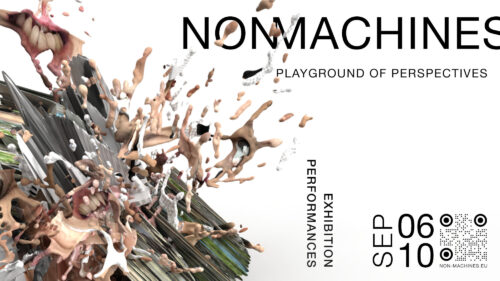
Da Da Die, 2023
Belçim Yavuz (TR)
Imagine a machine that is programmed to perform one task; the reason for its existence. Now run for your life, type on your laptop the whole day, and turn around till you faint. Repeat doing whatever you do, to fulfill your human purpose.
-
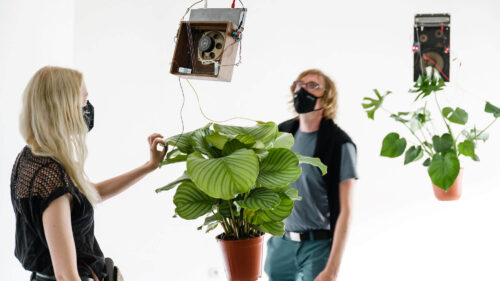
electro|botanic
Cosmo Schüppel (DE)
Recent studies suggest that plants are able to experience electromagnetic fields and react to them. The movement-responsive sound installation electro|botanic speculates on this perception of plants. Through sonification, humans can interact with the plant’s perception fields.
-
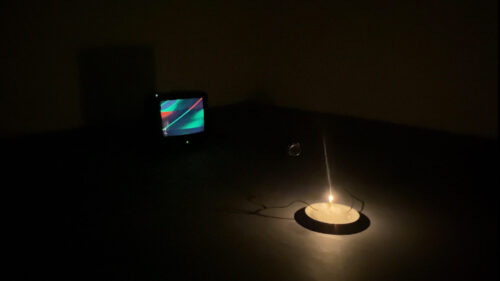
Happy Birthday To You
Dahye Seo (KR)
Happy Birthday To You is inspired by the similarities between nature and analog signals. Analog signals are a continuous physical flow. Nature changes just like an analog signal. Sunlight continuously gets brighter and dimmer. The same goes for the way a day goes, the seasons change, and the way all beings are born and die.
-

LICHENLOUNGE
Klaus Fritze (DE) and Julius Continental (DE), Betül Peker (TR), Ursula Damm (DE), Carmen Draxler (DE), Jörn Hentschel (DE), Jan Vondrak (CZ)
Lichenlounge is conceived as a sustainable, modular and cooperative work of artistic research by different authors that focus on lichen symbiosis in nature. The installation and process are dedicated to the patient waiting for lichenogenic fungi and microalgae to merge.
-

Like a Glitch in the Bodyframe
Victoria Mikhaylova (RU), Briam Rolon (CO), Victor Mahecha (CO), Cindy Augustin (DE), Selena Deger (TR), Elham Hesami (IR)
This installation explores the complex relationship between non-machine actors and machines in the digital age. The installation challenges participants to explore the potential interactions between the living and non-living agents as mediators between physical and digital realities.
-

Networked Beings – Parameters and Parallels
Kristin Jakubek (DE)
Networked Beings – Parameters and Parallels’ is an immersive video-installation, showing a visual dialog between two distinctly non-human forms of ‘being’ and processing the world.
-

Physarum Pavilion
Betül Peker (TR)
Physarum Pavilion aims to give a space to organisms and examine the behavior of conscious and continuous movement. The human being has a tendency to welcome attractive parts of nature in their life in indoor and outdoor spaces.
-

Postcolonial research group
Mudassir Sheikh (PK), Juan Sebastian Alvarado Prince (CO), Rodrigue Saad (LB)
Much of the current discussion on reclaiming and reconciliation practices that fall under the broad banner of “de-colonizing” looks to technology as a solution. Especially, but not exclusively, with the peaked fascination with AI.
-

SelfPleasure
Nicolas Krewer (DE)
Examining organisms’ experiences and stimulation, SelfPleasure explores the speculative and philosophical perspective of organisms’ feelings. The slime mold, Physarum polycephalum, despite stimulating itself in this experiment, didn’t even grant consent.
-

SMELL
Sophia Amelia Eickhoff (DE)
This is an exploration of the negative societal conditioning to human odors. This phenomenon is due to the standards of hygiene, evolving through sedentary lifestyles and socioeconomic disparities. Body odors and pheromones give information about our health, initially the reproductive potential.
Performances
-

1+1=1
Dahye Seo (KR)
1 + 1 = 1 deals with rivers flowing through three cities – Anseong (KR), Weimar (GE) and Yeonggwang (KR). Anseong and Weimar are the cities where I currently reside and Yeonggwang is the city where my grandmother lived during her lifetime.
-

A Sea Dive Into Embodied Epistemology
Johanna Reckewerth (DE)
If there is any chance for humans to survive on the planet, it is to work together on a paradigm shift that requires radical rethinking. How can we use our bodies as tools to shift our perspectives & enhance consciousness of multi-species relations?
-
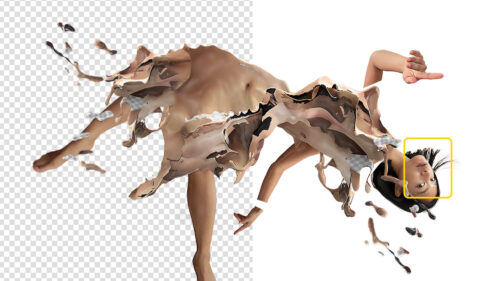
AI-mpowering Eve
Passion Asasu (TH)
The dance performance challenges the media’s portrayal of women by expressing emotions through Dadaist-inspired poetry. The artist uses her body as a poet’s pen with the help of machine learning models, it critiques the prevalent culture of objectification and exploitation of women perpetuated by the media.
-

Artists For Future
Gabriel S Moses (IL), Ann-Kathrin Müller (DE)
A three-part video-based artist lecture to end all artist lectures. Artistic research has become the new way for artists to be taken seriously in academia.
-
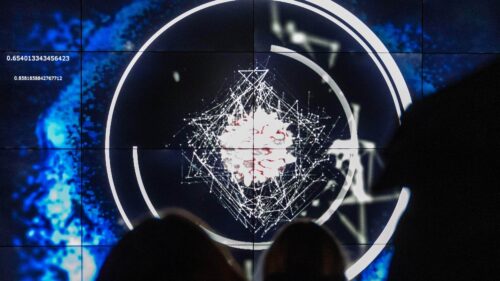
bios
Joel Schäfer (DE)
The audiovisual live performance piece “bios” imagines and explores the intrinsic aesthetics of the deep sea and the so-called “cyberspace” as the digital realm.
-
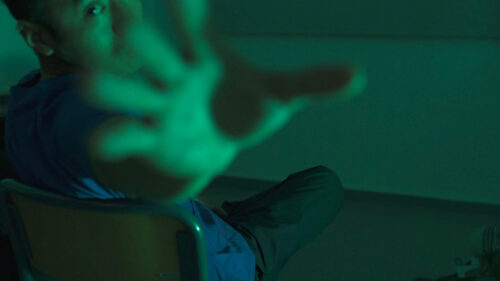
Detox
Thai Tai Pham (DE)
Detox is an artistic exploration and an attempt to pit technology against technology. The performance aims to experience the limits in search of a silence in the noise through methods of deceleration.
-
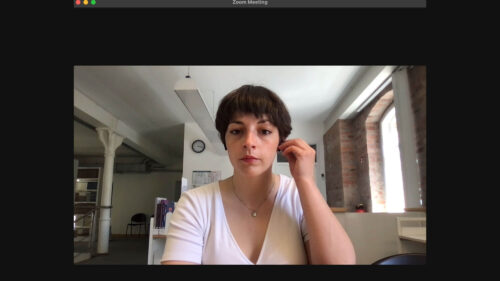
ECHO
Lisa Albrecht (DE)
ECHO is a performed dialog between a human voice and an artificial voice. First, a human talks in a zoom call. Answers are short, but still form the impression of a strategy meeting.
-
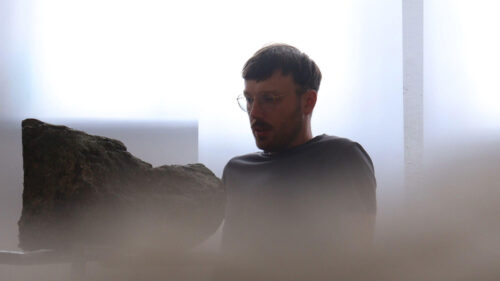
I AM TRULY BECOMING A SPECTER
Martin Müller (DE)
Monoliths rigidly force us into an outside perspective and guard the secrets that lurk within. Unable to experience what it is to dwell within solidity, we invent spirits that do it for us. Rocks, however, linger motionless as life passes by.
-

Sense Or?
Belçim Yavuz (TR), Valeriia Shakova (RU)
Sense Or? is an interdisciplinary project combining interactive media and performance art. Drawing an analogy between the aftereffects of individual experience of trauma and collective experience of censorship, the project plays around the concepts of self-censorship, aesthetics of censorship, the oppressed and oppressor, being silent and silencing.
-

Tabula Rasa
Isabella Lee Arturo (CO)
The installation and performance consist of a live drawing that the artist makes on the floor, while trying to verbally express a message. This message is recorded with a wireless microphone and transmitted to a program that activates a language model generator.
-
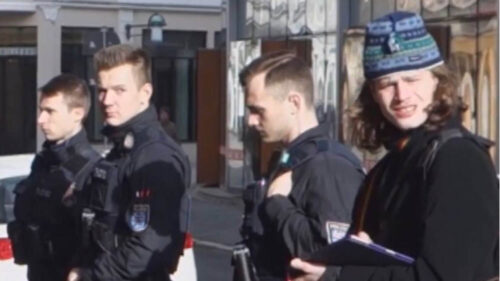
trigger to self discovery
Jan Munske (DE)
In this immersive performance piece, I explore the depths of human existence by questioning the boundaries between art, life and personal experiences.
About the Bauhaus-Universität Weimar
With faculties and research areas such as Architecture and Urbanism, Civil Engineering, Art and Design and Media, the Bauhaus-Universität Weimar has a distinctive identity. Today the University offers an extensive spectrum of instruction with about 40 courses of study, including fine art, design, visual communication, media design, media studies, computer science, and architecture. The term “Bauhaus” stands for an eagerness to experiment, openness, creativity and internationality.
Credits
Supported by the Bauhaus University Weimar

